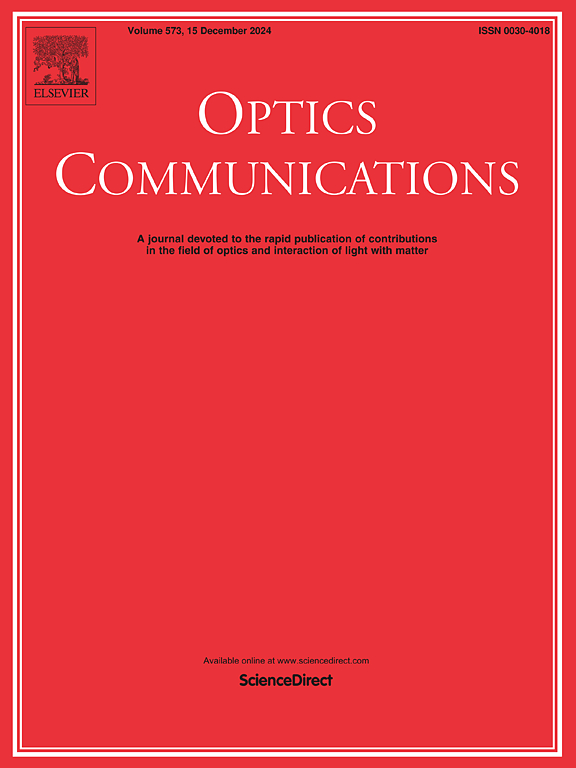Influence of nozzle pressure ratio on aero-optical effects in a free-vortex aerodynamic window
IF 2.2
3区 物理与天体物理
Q2 OPTICS
引用次数: 0
Abstract
Aero-optical effects during high-speed flight can significantly degrade the accuracy of imaging guidance systems. Compared to conventional solid optical windows, aerodynamic windows demonstrate superior performance in thermal radiation resistance and structural integrity without thermal fracture. In this study, a free-vortex aerodynamic window is designed, and the influence of the nozzle pressure ratio (NPR) on its optical performance under supersonic flight conditions is investigated using steady-state computational fluid dynamics simulations, geometric ray-tracing method, and diffraction theory. The results show that the free-vortex aerodynamic window is capable of cooling the high-temperature airflow on the vehicle surface and preventing the intrusion of ambient atmosphere into the optical cavity. Within the NPR range of 37.97–57.87, the overall wave-front root-mean-square of the optical path difference remains relatively stable (ΔOPDrms<0.05λ). According to the diffraction results, at lower NPR, the point spread function (PSF) distribution of the distorted beam after diffraction in the far field shows a positional shift of the focal spot and slight energy spread. For NPR≥37.97, the PSF pattern exhibits not only positional shift and energy spread but also a speckle pattern, indicating significant high-order aberrations. These findings provide quantitative criteria for optimizing aerodynamic window designs in supersonic imaging systems, particularly in balancing NPR selection with wavefront error tolerance.
喷管压力比对自由涡窗气动光学效应的影响
高速飞行过程中的气动光学效应会显著降低成像制导系统的精度。与传统的固体光学窗相比,气动窗在抗热辐射和结构完整性方面表现出优异的性能。设计了自由涡气动窗,采用稳态计算流体力学模拟、几何射线追踪法和衍射理论,研究了超声速飞行条件下喷管压力比(NPR)对其光学性能的影响。结果表明,自由涡气动窗能够有效地冷却车辆表面的高温气流,防止环境大气进入光学腔内。在NPR为37.97 ~ 57.87的范围内,光程差的整体波前均方根保持相对稳定(ΔOPDrms<0.05λ)。从衍射结果可以看出,在较低NPR下,畸变光束在远场衍射后的点扩散函数(PSF)分布表现为焦斑的位置偏移和轻微的能量扩散。当NPR≥37.97时,PSF模式不仅表现为位置偏移和能量扩散,而且表现为散斑模式,表明存在明显的高阶像差。这些发现为优化超音速成像系统的气动窗口设计提供了定量标准,特别是在平衡NPR选择和波前误差容限方面。
本文章由计算机程序翻译,如有差异,请以英文原文为准。
求助全文
约1分钟内获得全文
求助全文
来源期刊

Optics Communications
物理-光学
CiteScore
5.10
自引率
8.30%
发文量
681
审稿时长
38 days
期刊介绍:
Optics Communications invites original and timely contributions containing new results in various fields of optics and photonics. The journal considers theoretical and experimental research in areas ranging from the fundamental properties of light to technological applications. Topics covered include classical and quantum optics, optical physics and light-matter interactions, lasers, imaging, guided-wave optics and optical information processing. Manuscripts should offer clear evidence of novelty and significance. Papers concentrating on mathematical and computational issues, with limited connection to optics, are not suitable for publication in the Journal. Similarly, small technical advances, or papers concerned only with engineering applications or issues of materials science fall outside the journal scope.
 求助内容:
求助内容: 应助结果提醒方式:
应助结果提醒方式:


